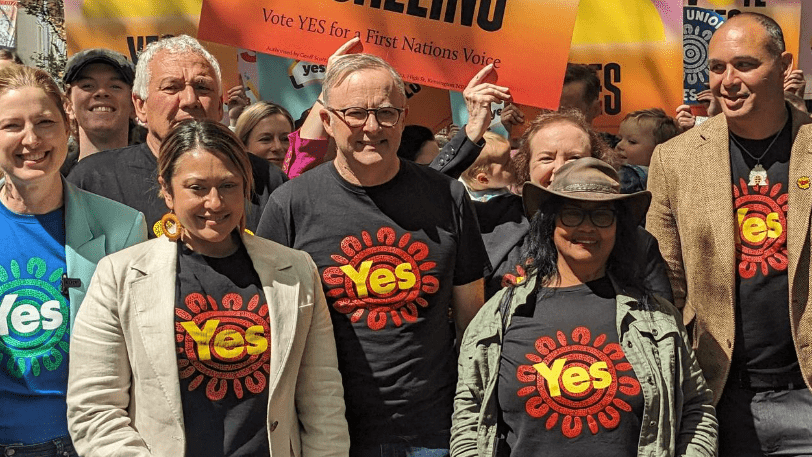Much has been written about the longstanding failings of the Australian media in its reportage of Indigenous affairs.
The most recent example is the Indigenous Voice to Parliament referendum. Research shows journalists were unable to articulate to voters what they were voting for. It also shows journalists failed to counter misinformation and were ill-equipped to report on the issue themselves.
To better understand what the media was getting right and wrong, we brought together a mix of Indigenous and non-Indigenous journalists, media professionals, journalism academics and students. We wanted to explore how journalism education and practice could be “unlearned”.
Our new paper, published in the journal Journalism, reports on seven key themes that emerged from these workshops.
How did the media perform on the Voice referendum?
The “he said/she said” reporting of yesteryear no longer serves a democratic purpose – the media must do better at calling out lies and misinformation, writes @DenisJMuller (@UniMelb). https://t.co/lFXw50merM
— The Conversation – Australia + New Zealand (@ConversationEDU) October 15, 2023
Longstanding problems
These issues aren’t new. The Royal Commission into Aboriginal Deaths in Custody noted back in the early 90s that:
Racial stereotyping and racism in the media is institutional, not individual.
Racism, the commissioner observed, results from news values, editorial policies, and routines that fit “existing definitions of the situation.”
Pressure on the media to get it right has only grown in recent years.
Australia’s multicultural broadcaster, SBS, faced a recent “racial reckoning” after claims of racist treatment of Indigenous reporters. And an ABC workplace report found staff from diverse backgrounds had experienced racism in and outside the national broadcaster.
Yes, coverage of Indigenous affairs and communities increased in recent years. But the deficit narrative in Indigenous reporting continues. This is where coverage focuses heavily on negativity, deficiency and failure.
These long-standing media industry critiques reinforce that journalism education needs Indigenous perspectives. “Unlearning” journalism can allow the next generation of journalists to do things differently.
We asked participants in our workshops to share ideas about how journalists could effectively and ethically cover Aboriginal and Torres Strait Islander peoples’ stories.
These seven ways to “unlearn” journalism stood out.

1. Questioning ‘news values’
It would help to question who is served by “news values” such as timeliness, or impact.
Journalism students are routinely taught these values are paramount, and are used to decide what makes the news. But it’s worth asking: do these news values just maintain the status quo?
As one journalism educator told us:
We’re still telling the same stories, it’s like a circle, and we don’t seem to be able to break free from it. Nothing seems to change.
2. Thinking critically about journalistic principles
It’s worth considering whether journalistic principles, such as independence, are compatible with Indigenous understandings of community and relationality. Relationality means thinking carefully about how people, places and communities are connected. It means remembering nothing exists in isolation.
As one Bundjalung and Minjungbal Country participant told us:
The idea is connection. I live this every day and we live this every day. I think there’s a lot that whitefullas could learn from how we interract with mob and how we protect each other and move through life.
Journalists are often taught or expected to try to be independent. Yet, sometimes access to a story is only possible through connections to a community.
Journalists might, for example, be taken off covering a story because they’re connected to that community. When journalists aren’t allowed these connections, however, this affects the types of stories that can be told and who can tell them.
3. Dispelling myths and assumptions
We need to make sure journalism students and practitioners have enough education to dispel rigid understandings of Indigeneity.
Participants told us that they frequently encountered colonial attitudes that took a blanket approach for Indigenous peoples that treats them as all the same.
4. Supporting relationship-building
Authentic and ongoing relationships with Indigenous communities are crucial to good coverage. Face-to-face contact hours between Indigenous and non-Indigenous peoples are essential.
This can lead to deeper understandings, more authentic representations, and better levels of cultural intelligence and competence. Newsrooms need to allow time and resourcing for this relationship-building work.
5. Understanding your own bias
Journalists should reflect on their own bias. How does it affect how you cover more diverse stories? Do you avoid covering certain stories because you don’t have the skills but aren’t willing to acknowledge it?
6. Promoting alternative forms of journalism
Examples include:
- solutions journalism
- explainer journalism
- “slow” journalism, where the story is developed over much longer time periods.
Journalists and newsrooms should consider incorporating Indigenous ways of doing journalism, even though Indigenous peoples might not call them by these terms.
These Indigenous ways of doing journalism require alternative business models and newsroom cultures that don’t, for example, operate on 24-hour news cycles.
7. Being mindful of emotional labour, burnout, and wellbeing
Emotional labour is the invisible and often uncompensated work Indigenous people and communities do when interacting with non-Indigenous peoples.
This unrecognised labour is often expected on top of the person’s regular responsibilities, resulting in stress and burnout.
It’s up to journalism educators and newsroom managers to recognise and respect this labour from Indigenous sources, colleagues and communities.
Working toward a more representative Australia
A good grounding in the colonial impacts on Aboriginal and Torres Strait Islander peoples can also improve journalists’ reporting on other diverse communities.
Journalism students become journalists. They will undoubtedly encounter Indigenous communities and their stories in their work.
It’s crucial journalism education equips these students with the skills and knowledge they’ll need.
Torres Strait Islander freelance journalist, Rhianna Patrick, was a main contributor to this article and a researcher on this project.


